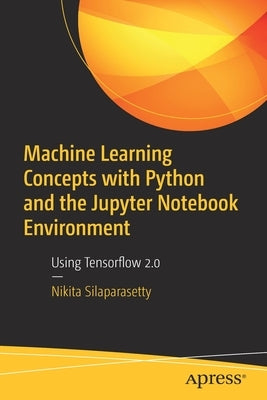Description
Create, execute, modify, and share machine learning applications with Python and TensorFlow 2.0 in the Jupyter Notebook environment. This book breaks down any barriers to programming machine learning applications through the use of Jupyter Notebook instead of a text editor or a regular IDE.
You'll start by learning how to use Jupyter Notebooks to improve the way you program with Python. After getting a good grounding in working with Python in Jupyter Notebooks, you'll dive into what TensorFlow is, how it helps machine learning enthusiasts, and how to tackle the challenges it presents. Along the way, sample programs created using Jupyter Notebooks allow you to apply concepts from earlier in the book.
Those who are new to machine learning can dive in with these easy programs and develop basic skills. A glossary at the end of the book provides common machine learning and Python keywords and definitions to make learning even easier.
What You Will Learn
- Program in Python and TensorFlow
- Tackle basic machine learning obstacles
- Develop in the Jupyter Notebooks environment
Who This Book Is For
Ideal for Machine Learning and Deep Learning enthusiasts who are interested in programming with Python using Tensorflow 2.0 in the Jupyter Notebook Application. Some basic knowledge of Machine Learning concepts and Python Programming (using Python version 3) is helpful.
Author: Nikita Silaparasetty
Publisher: Apress
Published: 09/22/2020
Pages: 290
Binding Type: Paperback
Weight: 0.99lbs
Size: 9.21h x 6.14w x 0.67d
ISBN13: 9781484259665
ISBN10: 1484259661
BISAC Categories:
- Computers | Artificial Intelligence | General
About the Author
Nikita Silaparasetty is a Data Scientist and an AI/Deep Learning Enthusiast specializing in Statistics and Mathematics. She is presently the head of the Indian based 'AI For Women' initiative, which aims to empower women in the field of Artificial Intelligence. She has strong experience programming using Jupyter Notebooks and a deep enthusiasm for TensorFlow and the potentials of Machine Learning. Through the book, she hopes to help readers become better at Python Programming using Tensorflow 2.0 with the help of Jupyter Notebooks, which can benefit them immensely in their Machine Learning journey.

